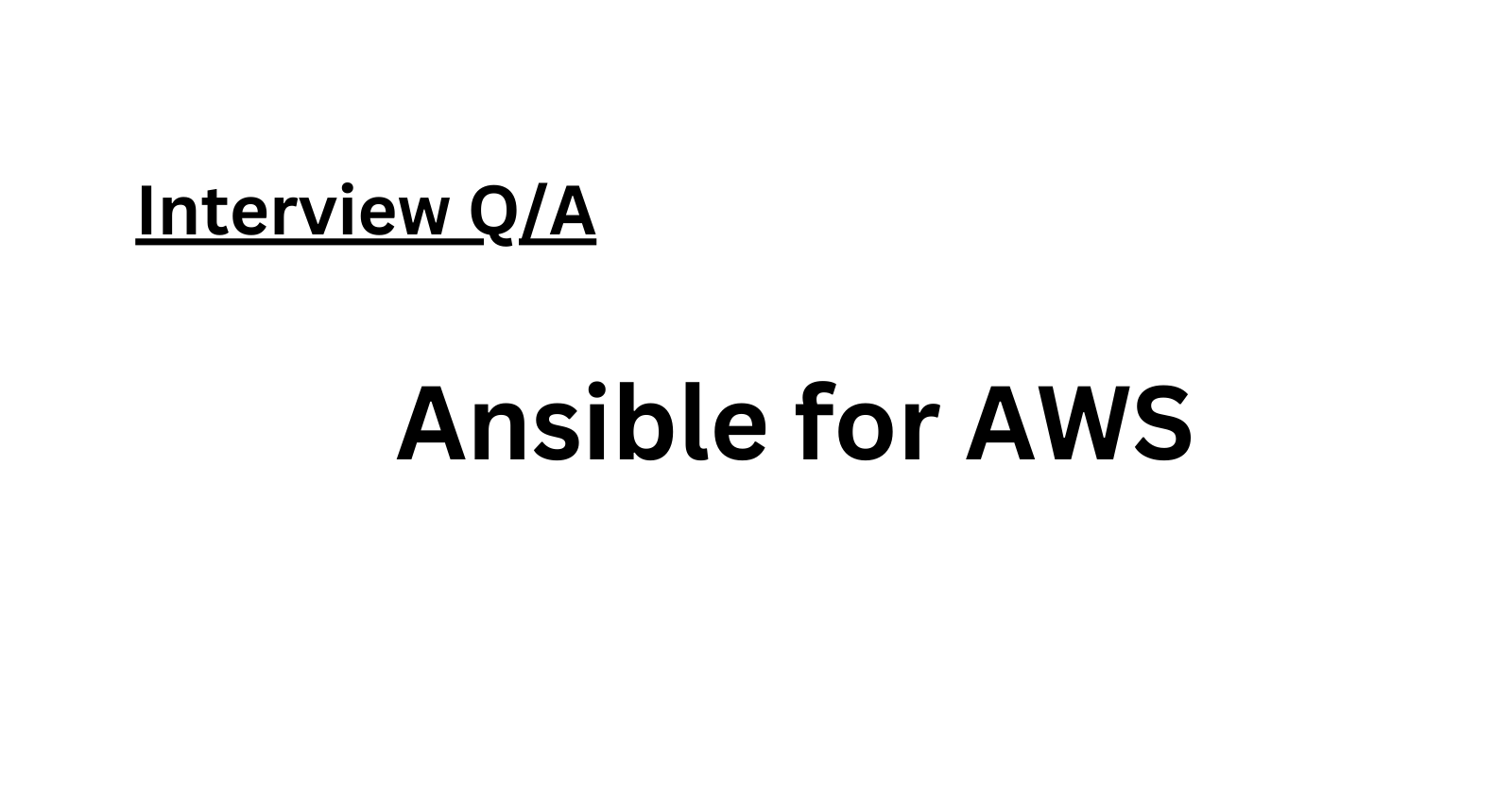Ansible for AWS: Simplifying Cloud Management
 Amrutha D
Amrutha D
What is Ansible, and how does it work for AWS?
Ansible is an open-source automation platform designed to simplify the deployment, configuration, and administration of infrastructure, encompassing cloud resources within Amazon Web Services (AWS).
This platform allows users to define their infrastructure's desired state through YAML files known as playbooks. These playbooks execute tasks like managing AWS resources such as EC2 instances, RDS databases, and S3 buckets. Its user-friendly nature and adaptability make it a favored choice for automating operations, saving significant time and effort on repetitive tasks.
Ansible simplifies the process of managing various aspects of cloud infrastructure on Amazon Web Services (AWS), enabling users to specify their infrastructure's desired state using YAML-based playbooks. These playbooks streamline the process, ensuring that Ansible manages the defined tasks effectively.
For instance, here is a sample playbook that creates an EC2 instance on AWS:
- name: Create an EC2 instance
hosts: localhost
connection: local
gather_facts: false
tasks:
- name: Create an EC2 instance
ec2:
region: us-east-1
image: ami-00eb20669e0990cb4
instance_type: t2.micro
key_name: mykey
security_groups:
- mysecuritygroup
tags:
Name: myec2instance
wait: true
register: ec2
- name: Print the instance ID
debug:
msg: The instance ID is {{ ec2.instance_id }}
To execute this playbook, you'll need the boto and boto3 Python libraries installed. Setting up the AWS CLI with configured credentials is essential. You can then use the ansible-playbook command to run the playbook.
This playbook showcases the capability of Ansible to create an EC2 instance using specified configurations, waiting until the instance is running, and displaying its ID.
The prerequisites for initiating Ansible and AWS integration include:
Installing Ansible using pip
Installing boto and boto3 Python libraries
Setting up AWS CLI and configuring credentials
Once these prerequisites are met, Ansible can manage a wide array of AWS resources such as EC2 instances, RDS databases, S3 buckets, and more.
Conclusion:
Ansible stands as a robust open-source platform empowering users to automate the provisioning, configuration, and management of their infrastructure, including AWS cloud resources. Employing YAML-based playbooks, Ansible significantly streamlines tasks related to AWS resource management, enhancing productivity by automating routine operations. Its versatility in handling various AWS resources makes it a favored choice for simplifying infrastructure management, aligning with users' desired specifications effortlessly.
Subscribe to my newsletter
Read articles from Amrutha D directly inside your inbox. Subscribe to the newsletter, and don't miss out.
Written by

Amrutha D
Amrutha D
Gen AI Video Creator | Gen AIOps | AIOps Cloud DevOps Engineer | Let's Connect & share Technical knowledge & grow together in Technologies Everyday..